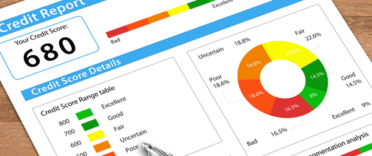(Update: This article was originally written in 2016 as "How to get £25,000 a year pension by saving just £32 a month". We've updated it to reflect changes in pension rules and the increase in average earnings in the UK).
If you don't already save into a pension don't worry. When it comes to financial planning it's never too late. In this article I explain:
- how a 30-year-old can have a retirement income equivalent to £30,000 a year (more than the national average wage) from just £55 a month, even if they are starting from scratch
- how a 40-year old and 50-old can achieve the same by saving just £125 and £250 a month respectively
- how to put a retirement plan into action and start saving
Remember, you need to plan for your retirement otherwise it will never happen. No one is going to do it for you.
1 - Realise that your required income is only £20k a year
When calculating the size of the pension pot required to provide an equivalent income of £30,000 a year, typically a financial planner will use current annuity rates and an assumption that you will take 25% of your pension pot as a tax-free cash lump sum. The rest of your pension pot would be used to produce your desired retirement income. Therefore using these assumptions someone who wanted to retire at the age of 65 with an income of £30,000 a year would need a pension pot of £900,000!
Clearly, that is a huge sum of money to try and save, which would mean that a 30-year-old would have to put away more than £1,500 a month to achieve it. If you are older then the numbers are far higher.
Yet it is possible to retire on an equivalent of £30,000 a year (which is a bit more than the national average wage) by saving just £55 a month if you are 30, £150 a month if you are aged 40 and £260 a month if you are aged 50.
The first step to achieving this is to realise that most people will have paid off their mortgage by the time they retire bringing their required retirement income down (i.e you won't need money to pay your mortgage each month once you retire). Therefore most people need a retirement income of around 2/3 of their salary to maintain their standard of living. This is the standard assumption used in most final salary pension schemes. So that brings down the required gross pension income to £20,000, from £30,000 a year. To produce a £20,000 a year pension would require a pension pot (based on the earlier assumptions) of £600,000. You can verify all of the figures quoted in this article by using our pension calculator.
2 - Use your entire pension pot to produce an income (i.e don't take tax-free cash)
If instead of taking 25% of your pension pot as a tax-free lump sum at retirement you instead used the entire pot to just produce an income in retirement, the required size of pension pot drops down to around £400,000 which is a bit more sensible. Not everyone needs to have a tax-free lump sum especially if they have cleared their mortgage, perhaps via a repayment mortgage.
3 - Factor in your state pension
When planning your retirement you next need to take account of all of your retirement income. Assuming that will receive a full state pension (as most people do) this currently equates to £9,339 a year.
So deducting that from the £20,000 retirement income target leaves you with needing to generate just £10,661 a year gross income from your pension pot. To generate this income you now only need a pension pot of £213,220 when you retire (in today's money). Already that is far more achievable. But I've not finished yet.
Start paying into a pension today
The power of compound returns means that the sooner you start putting money into a pension the less you have to save a month.
To get a pension pot worth around £213,200 by age 65 you would need to save approximately
- £400 a month if you are aged 30
- £600 a month if you are aged 40
- £1,100 a month if you are aged 50
These may still seem like big numbers but don't worry I'm going to reduce them further.
4 - Reduce the investment charges on your pension
Now the above figures are assuming that you pay an annual charge on your pension (such as a SIPP) of around 1.5% including fund charges. Yet these days it is possible with Exchange Traded Funds (ETFs) and tracker funds to get the annual charge much lower. Charges have a huge impact on the size of your pension fund over time. Or in other words, reducing charges means your pension pot grows more quickly and you can therefore contribute less each month.
If in my example above, the 30-year-old cut their charges by investing their pension fund into ETFs or tracker funds with a low-cost platform or pension then they would need to save just £320 a month. This assumes total charges are 0.5% of the size of your pension pot each year. The equivalent monthly contributions for 40 and 50-year-olds are shown below (again you can use our pension calculator to see the impact of varying your pension charges):
- £320 a month if you are aged 30
- £510 a month if you are aged 40
- £980 a month if you are aged 50
5- Increase the level of investment risk
One of the benefits of starting to save for retirement early is that you can afford to take a little more risk. The above figures assume an average return of 5% a year with inflation running at 2% per annum. It is worth noting that even though inflation was recorded at 7.9% in February 2022, it has averaged just over 2% since 1989. So, if a 30-year-old took more risk and the average annual return was say 8% a year above our calculated 2% inflation rate, then it would mean that they would only need to save £110 a month and still achieve the required retirement income of £10,661 in today's money. Combining this with their state pension would give an annual income of £20,000, which would be equivalent to a pre-retirement income of £30,000 a year. Of course, there is no certainty of achieving an 8% above inflation return each year, especially during years of unusually high inflation such as 2022, but it is not unrealistic. The equivalent monthly contributions for 40 and 50-year-olds are shown below:
- £110 a month if you are aged 30
- £250 a month if you are aged 40
- £650 a month if you are aged 50
6 - Claim tax-relief on your pension contributions
This is the crucial bit. Pension contributions enjoy generous tax reliefs. For every £8 a basic rate (20%) tax payer pays into a pension HMRC adds £2. Or in other words every £100 of pension costs them just £80. For higher rate (40%) tax payers the relief is even more generous meaning every £100 in a pension costs them just £60. They would still put £80 into the pension each month and HMRC would add £20, while the other £20 tax relief is claimed back via their tax return.
So for the 30 year in our example, the cost of the pension is now £66 a month assuming they are a higher rate tax payer. For other ages and tax bands see the table below.
| Age | Net monthly contribution 20% tax payer | Net monthly contribution 40% tax payer |
| 30 | £88 | £66 (you pay £88 into the pension & claim £12 extra tax relief via your self-assessment) |
| 40 | £200 | £150 (you pay £200 into the pension & claim £50 extra tax relief via your self-assessment) |
| 50 | £520 | £390 (you pay £520 into the pension & claim £130 extra tax relief via your self-assessment) |
If you are self-employed then I suggest you begin contributing to a pension right now. If you don't have one already then read our article 'How to start paying into a pension'.
7 - If you are employed - Get an extra boost from employer contributions
Assuming that you are employed then under auto-enrolment scheme rules every employer in the UK has to contribute to a pension for their employees, as long as the employees do so themselves. To be eligible for auto-enrolment
- you must be aged 22 or over and less than state pension age
- earning over £10,000 a year and working in the UK
- not already in a suitable workplace scheme
Assuming that you meet the criteria then the minimal total pension contribution under auto-enrolment is at 8% gross of your qualifying earnings, where 5% is provided by the employee and 3% by the employer. Qualifying earnings for the 2021/22 tax year are earnings between £6,240 and £50,270.
That means that if a 30 year old joined their company's auto-enrolment scheme and earned £22,740, then their 5% contribution (based on qualifying earnings) plus their employer's 3% contribution would total the required £110 a month in section 5 above.
That would mean that you would only have to pay £55 a month (net) into your company's pension scheme. Once you add in the tax relief from HMRC and your employer's pension contribution this totals exactly the required £110 a month. The table below shows a breakdown of the employer and employee contributions and salary required to achieve the desired pension pot just by using auto-enrolment if you are aged 30, 40 or 50. I have also stated whether the scheme needs to pay contributions on qualifying earnings or on your full salary (as some do).
How to achieve a pension equivalent to a pre-retirement income of £30,000* a year using auto-enrolment
| Age | Earnings required | Contribution paid on qualifying earnings or all earnings? | Assumed contribution rates | Net employee monthly contribution from wages | Tax relief (on employee's contribution) | Employer's contribution 5% | Total gross monthly contribution |
| 30 | £22,740 | qualifying earning | 5% employee, 3% employer | £55 | £13.75 | £41.25 | £110 |
| 40 | £43,740 | qualifying earning | 5% employee, 3% employer | £125 | £31.25 | £93.75 | £250 |
| 50 | £78,000 | all earnings | 5% employee, 5% employer | £260 | £65 | £325 | £650 |
* assuming charges of 0.5% per annum and annual growth of 8% in excess of inflation
Things to bear in mind
Of course, I have used a number of assumptions to achieve the above result and such an outcome is not guaranteed, due to the variations in investment terms. Also, there is no guarantee that the state pension will exist indefinitely. But the exercise illustrates that you shouldn't be put off saving for retirement. There are many levers you can pull to achieve a comfortable retirement. Indeed, the above figures assume a person is not married or in a civil partnership. If they are then each person receives a state pension of their own assuming that they have a sufficient national insurance record. That then would boost the annual retirement income by a further £9,339 a year, meaning that as a household they could contribute less to a pension and achieve the same result.
But think of the above exercise as showing the minimum contribution amounts that are needed to achieve a reasonable retirement income. It is your contingency plan that will ensure that you have a comfortable retirement. The more you contribute to a pension and the sooner you start the better your retirement should be.
The final piece to the jigsaw
You need to plan for your retirement or it will never happen. You now know what you need to do to ensure a comfortable retirement. If you don't have a pension plan to contribute to you can start a pension online* with the UK's leading pension provider with a one-off payment of just £80 or with a regular contribution of £20 a month. You don't even have to decide your investment choices to get up and running. Plus it only takes a few minutes to set up. It's popularity stems from its cost effectiveness, wide investment choice (including low cost tracker funds and ETFS), excellent customer service and online functionality. The important thing is to start contributing to a pension as soon as possible
Put your plan into action
The sooner you start contributing to a pension, no matter how small, the sooner you can retire
Secure your retirement*For those of you who want to know a little bit more about how a pension works then here is an excellent guide to Self Invested Personal Pensions*.
Good luck and please share this article to empower others to start planning for retirement themselves.
If a link has an * beside it this means that it is an affiliated link. If you go via the link, Money to the Masses may receive a small fee which helps keep Money to the Masses free to use. The following link can be used if you do not wish to help Money to the Masses or take advantage of any exclusive offers – Hargreaves Lansdown



